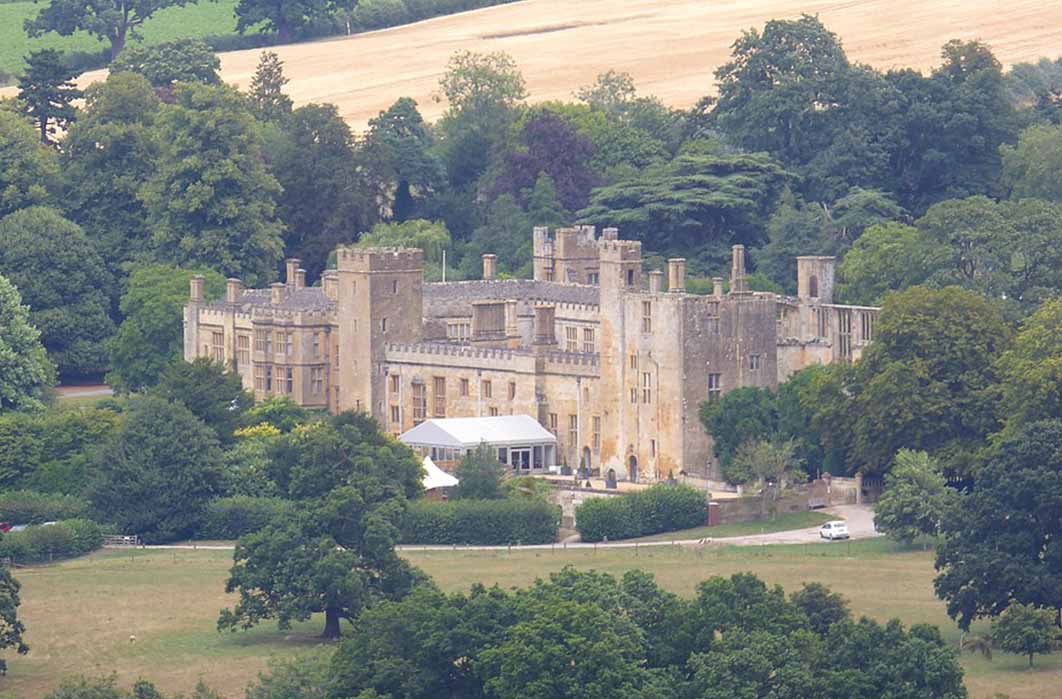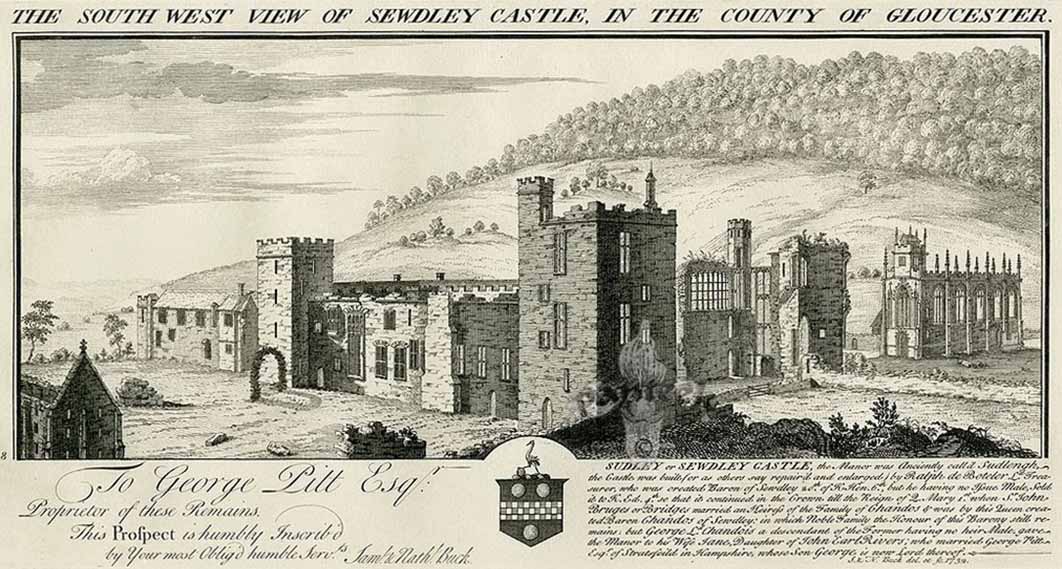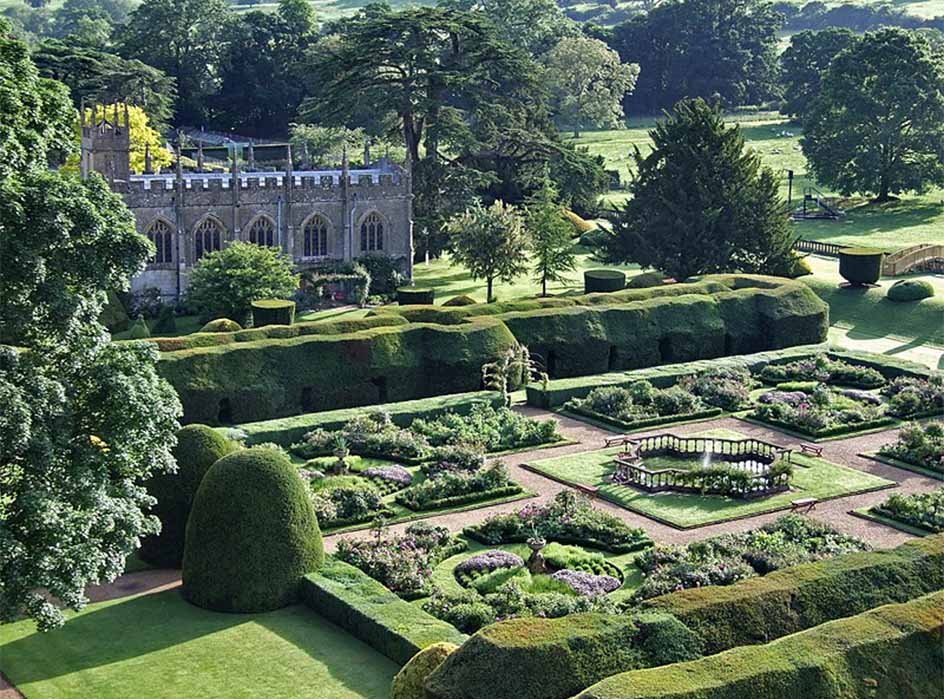
Sudeley Castle’s ‘Footprints’ Of The Tudors
Awarded the accolade as “one of England’s most picturesque castles”, the manor of Sudeley Castle lies just to the east of the picturesque River Isbourne, a few miles from Cheltenham, on the edge of the Cotswold Plateau. Besides being renowned for its majestic beauty, the castle is well-known as one of the favorite palaces of the most infamous of all royal dynasties; the Tudors. Anne Boleyn and Henry VIII stayed there whilst, ahead of the Dissolution of the Monasteries, they investigated the authenticity of the relic of Holy Blood at Hailes Abbey. Katherine Parr, Henry VIII’s last wife lived, died and is buried there, whilst his daughter, Queen Elizabeth I most famously in 1592 celebrated the anniversary of her victory over the mighty Spanish Armada at the castle. She stayed for three days and was hosted at a huge expense by Giles Brydges, third Baron Chandos of Sudeley, in what was called one of the greatest celebrations in royal history.

Engraving of Sudeley Castle in 1732, showing the ruinous inner court, and still occupied outer court. (Public Domain)
Pre-history Of Sudeley
For the last four years Dig Ventures have been excavating the site every summer and made remarkable discoveries, including the site of a temporary Tudor palace related to Elizabeth I’s celebrations, traces of a great feast, garden features and finds relating to Winchcombe Abbey. All of which contributing to rewriting the rich and varied history of Sudeley castle, spanning several centuries.
The castle was built in an area that already had a long history of human occupation. The surrounding landscape is littered with Neolithic long barrows and flint finds which attest to a prehistoric presence in the area. The long barrow of Belas Knap lies particularly close and is of relevance to Sudeley in that it was excavated between 1863 and 1865 and was later restored by Mrs Emma Dent, wife of the then owner of Sudeley castle who in the 1870’s funded excavations at Sudeley under the direction of Cannon Lyson prior to her restoration of the house and gardens. She also recorded, in 1877, Roman tesserae having been found just to the east of the castle, along with an altar stone in the area. This has led archaeologists to suggest that there was at some point a Romano-British villa in the area, overlaying possible Iron Age activity.

Sudeley Castle Queen’s Garden with St Mary’s Church in the background (jennicatpink /CC BY-SA 2.0)
The land surrounding the castle was, in the ninth century, the property of King Ethelred and comprised a rich estate with excellent hunting, access to good fishing and natural resources such as highly valuable oak. Princess Goda, a daughter of King Ethelred, was given the manor upon her marriage to Walter de Maunt and she managed to retain its possession despite the best efforts of King Canute to relieve her of it. Following the Norman Conquest the castle was not confiscated, but rather unusually allowed to remain in the De Sudeley family, possibly because of its distant relationship to King Ethelred. By 1085 the Domesday Book records that the estate was held by Harold de Sudeley and it was taxed at “12 hides (with) 31 plow villages, six water mills, and a wood four and a half by four miles in size”. It is possibly this wood that originally gave Sudeley its name, the Anglos Saxon name Sudeleagh literally meaning “south lying pasture or clearing by a forest.”
Sudeley Castle During The Anarchy
The first castle was built at Sudeley in the period of British history known as ‘The Anarchy’, during which the daughter of Henry I, the Empress Maud/Matilda, fought for her throne against Henry’s nephew Stephen of Blois, later King Stephen. The castle first appears in the records from 1139. Little trace of this structure survives today, but it is believed to have been an adulertine - literally meaning unauthorized - castle. These were castles built during The Anarchy without royal approval to defend territories and provide military bases from which to operate.
- Pembroke Castle Revealing A Secret Of Henry VII’s Birthplace
- The Messiest Divorce in History - The Secret Diary of Anne Boleyn
- The Complicated and Disturbing Life of King Henry VIII
In 1139 the castle, under John de Sudeley, supported the Empress Matilda. As such it was attacked in revenge for Matilda’s sacking of Worcester and captured by Stephen’s forces. The castle seems to have been nearly totally destroyed, as it was felt necessary to build a replacement fortress soon afterwards at nearby Winchcombe.




